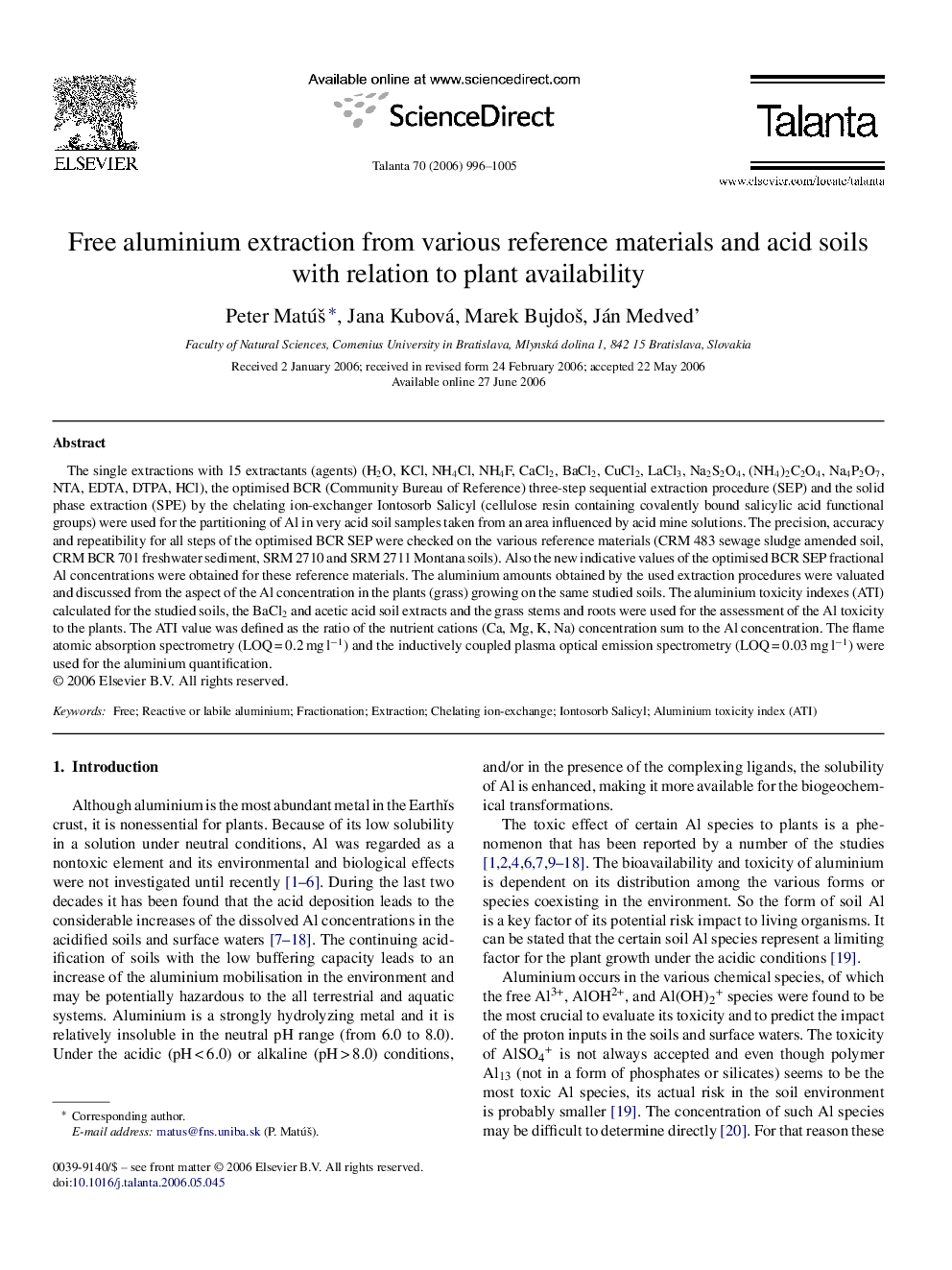| Article ID | Journal | Published Year | Pages | File Type |
|---|---|---|---|---|
| 1245349 | Talanta | 2006 | 10 Pages |
The single extractions with 15 extractants (agents) (H2O, KCl, NH4Cl, NH4F, CaCl2, BaCl2, CuCl2, LaCl3, Na2S2O4, (NH4)2C2O4, Na4P2O7, NTA, EDTA, DTPA, HCl), the optimised BCR (Community Bureau of Reference) three-step sequential extraction procedure (SEP) and the solid phase extraction (SPE) by the chelating ion-exchanger Iontosorb Salicyl (cellulose resin containing covalently bound salicylic acid functional groups) were used for the partitioning of Al in very acid soil samples taken from an area influenced by acid mine solutions. The precision, accuracy and repeatibility for all steps of the optimised BCR SEP were checked on the various reference materials (CRM 483 sewage sludge amended soil, CRM BCR 701 freshwater sediment, SRM 2710 and SRM 2711 Montana soils). Also the new indicative values of the optimised BCR SEP fractional Al concentrations were obtained for these reference materials. The aluminium amounts obtained by the used extraction procedures were valuated and discussed from the aspect of the Al concentration in the plants (grass) growing on the same studied soils. The aluminium toxicity indexes (ATI) calculated for the studied soils, the BaCl2 and acetic acid soil extracts and the grass stems and roots were used for the assessment of the Al toxicity to the plants. The ATI value was defined as the ratio of the nutrient cations (Ca, Mg, K, Na) concentration sum to the Al concentration. The flame atomic absorption spectrometry (LOQ = 0.2 mg l−1) and the inductively coupled plasma optical emission spectrometry (LOQ = 0.03 mg l−1) were used for the aluminium quantification.
